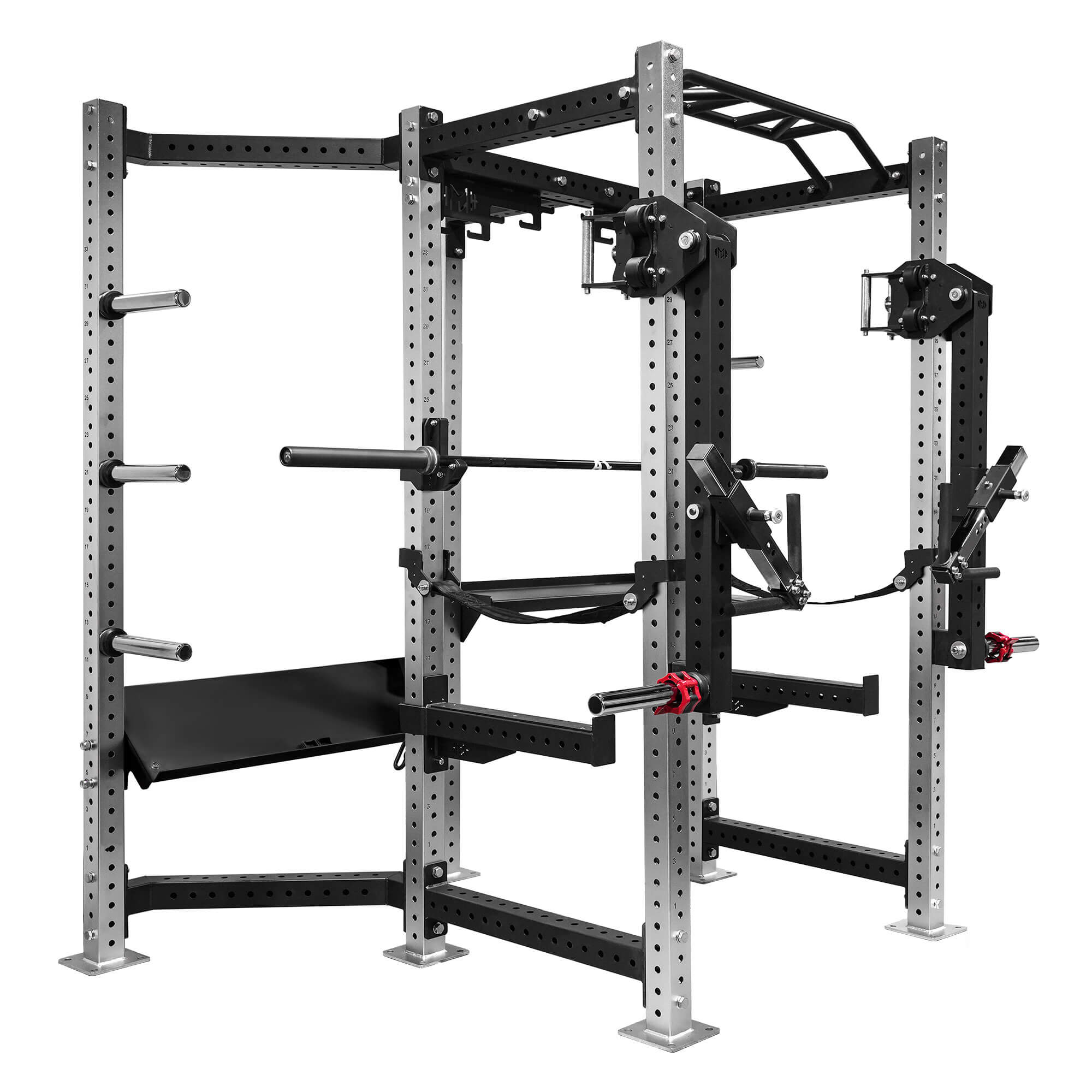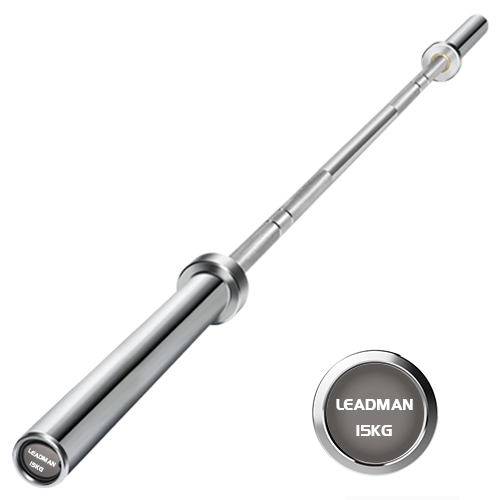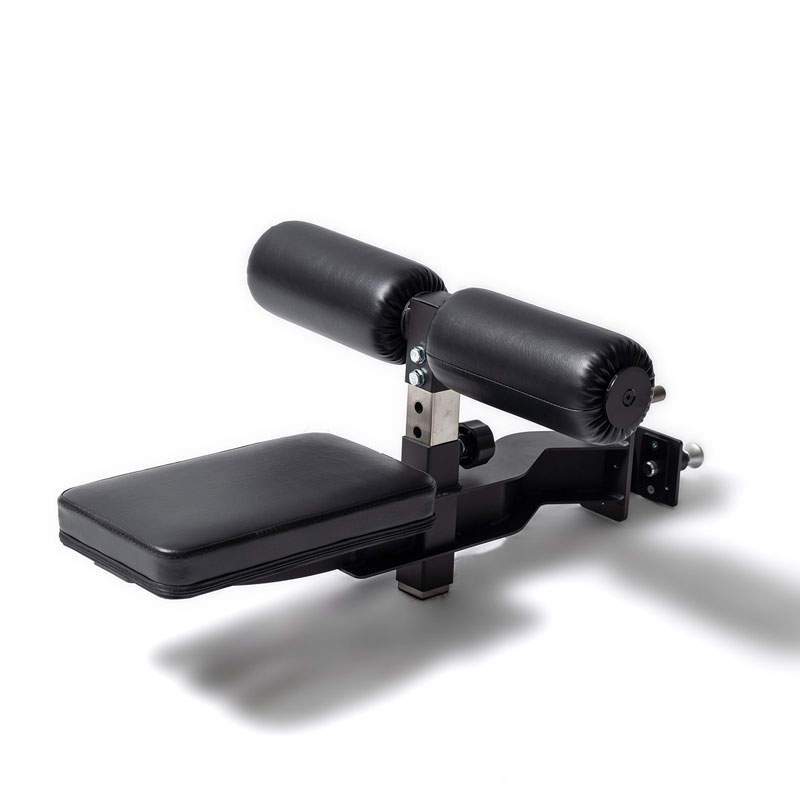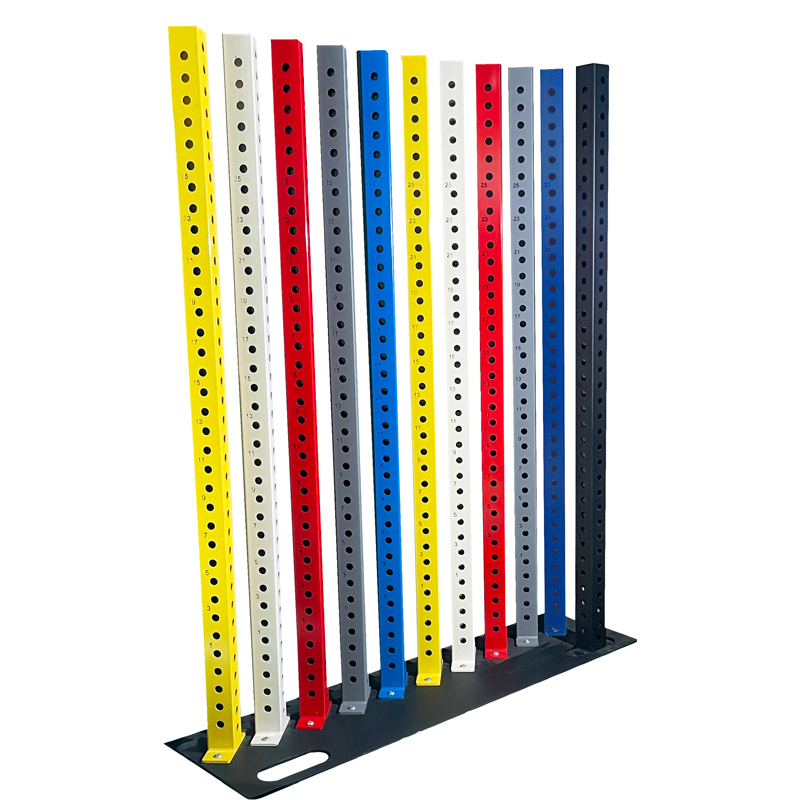Reliable Barbell Service
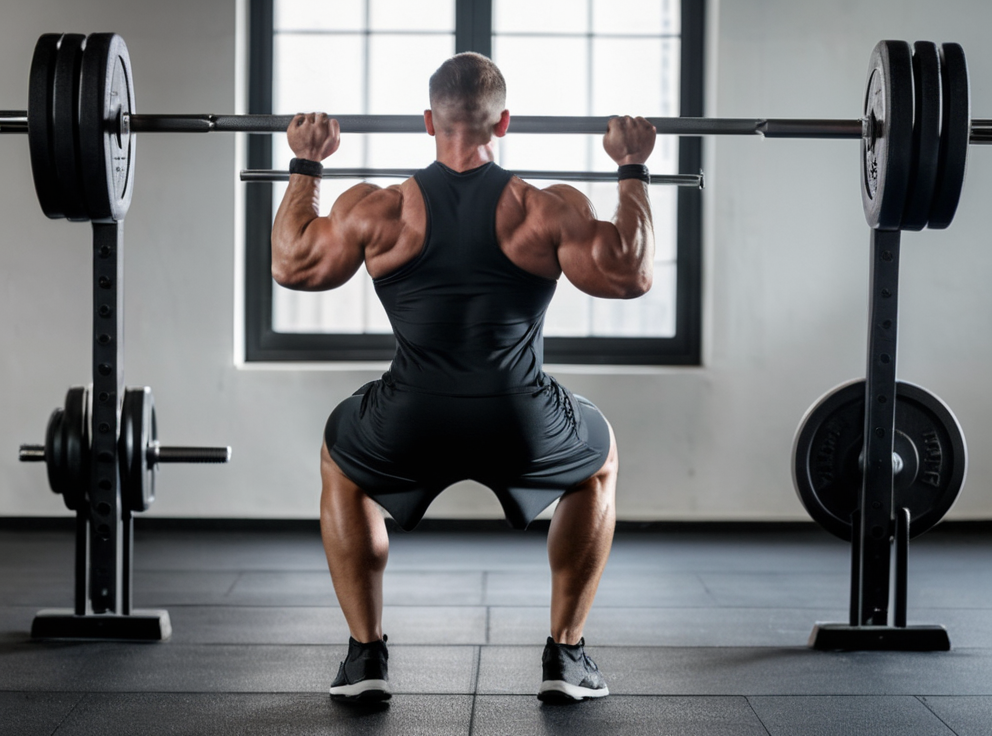
Introduction
In the world of strength training and fitness, few pieces of equipment are as fundamental as the barbell. Whether you're a competitive powerlifter, or someone just starting their fitness journey, the quality and reliability of your barbell can make all the difference in your training experience and results.
This comprehensive guide will explore everything you need to know about reliable barbell service - from selecting the right barbell for your needs to proper maintenance, and how to ensure you're getting the best possible performance from your equipment year after year.
Understanding Barbell Types and Their Purposes
Not all barbells are created equal. Different types are designed for specific purposes, and choosing the right one for your training needs is crucial for both performance and safety.
1. Olympic Barbells
Olympic barbells are the standard for competitive weightlifting and powerlifting. These bars are 7 feet long with a 2-inch sleeve diameter designed to accommodate Olympic-sized weight plates. They typically weigh 20kg (44lbs) for men's bars and 15kg (33lbs) for women's bars.
2. Power Bars
Power bars are specifically designed for powerlifting movements like squats, bench presses, and deadlifts. They're stiffer than Olympic bars to better handle heavy weights with minimal whip, and feature more aggressive knurling for superior grip.
3. Deadlift Bars
Deadlift bars are longer and more flexible than standard power bars, designed to provide more whip during the deadlift movement. This whip can actually help lifters get the bar off the ground more easily at the start of the lift.
4. Specialty Bars
This category includes various bars designed for specific purposes, such as trap bars for deadlifts, safety squat bars for easier squatting, and curl bars for arm exercises. Each serves a unique purpose in a well-rounded training program.
Key Features of a Quality Barbell
When evaluating barbell quality, several key features separate premium bars from inferior ones:
1. Knurling
The knurling (the textured pattern on the bar) affects grip significantly. Quality bars have consistent, well-defined knurling that provides secure grip without being overly abrasive. The placement and aggressiveness of the knurling should match the bar's intended use.
2. Sleeve Rotation
Good barbells have sleeves that rotate smoothly on high-quality bearings or bushings. This is particularly important for Olympic weightlifting movements where the bar needs to spin freely during quick lifts.
3. Tensile Strength
The tensile strength (measured in PSI) indicates how much stress the bar can handle before bending or breaking. Premium bars typically have tensile strengths of 190,000 PSI or higher, ensuring they can handle heavy loads repeatedly without permanent deformation.
4. Finish
The bar's finish affects both its appearance and durability. Common finishes include chrome, zinc, black oxide, and bare steel. Each has different characteristics in terms of grip, corrosion resistance, and maintenance requirements.
5. Whip
Whip refers to how much the bar bends under load. Olympic weightlifting bars are designed with more whip to help with explosive movements, while power bars are stiffer for heavy, controlled lifts.
Barbell Maintenance: Keeping Your Bar in Top Condition
Proper maintenance is essential for extending the life of your barbell and ensuring optimal performance. Here's a comprehensive maintenance routine:
1. Regular Cleaning
Wipe down your barbell after each use with a clean, dry cloth to remove sweat and chalk. For more thorough cleaning, use a stiff brush to remove chalk buildup from the knurling.
2. Proper Storage
Store your barbell in a dry environment, preferably on a rack rather than on the floor. Avoid leaving plates on the bar for extended periods as this can cause the sleeves to warp over time.
3. Lubrication
For bars with rotating sleeves, periodic lubrication of the bushings or bearings will maintain smooth rotation. Use a light machine oil or specialized barbell lubricant.
4. Rust Prevention
For bare steel bars or bars with worn finishes, occasional oiling with a light coat of 3-in-1 oil or specialized barbell oil will prevent rust. Wipe off excess oil to avoid making the bar too slippery.
Common Barbell Problems and Solutions
Even with the best care, barbells can develop issues over time. Here are some common problems and how to address them:
1. Sleeves Not Rotating Smoothly
If the sleeves aren't rotating smoothly, they may need cleaning and lubrication. Remove any visible dirt or debris, then apply an appropriate lubricant. For persistent issues, the bearings or bushings may need replacement.
2. Rust Formation
Small rust spots can often be removed with fine steel wool or a brass brush, followed by application of a protective oil. For more severe rust, professional refinishing may be necessary.
3. Bent Bar
A slightly bent bar can sometimes be straightened by a professional, but significant bends usually mean the bar needs replacement. Continuing to use a significantly bent bar can be dangerous and may void warranties.
4. Loose Collars
If the collars (the parts that keep plates from sliding off) become loose, they may need tightening or replacement. Some bars have threaded collars that can be tightened with a specialized wrench.
When to Replace Your Barbell
Even the highest quality barbells don't last forever. Here are signs it might be time for a replacement:
- Permanent bending: If the bar doesn't return to straight after unloading
- Cracked or damaged knurling: Compromised knurling can affect grip and safety
- Excessive rust: Especially if it's causing pitting in the metal
- Non-repairable sleeve issues: When sleeves won't rotate properly despite maintenance
- Visible stress marks: Indications of metal fatigue that could lead to failure
High-quality barbells from reputable manufacturers can last for decades with proper care, making them a worthwhile investment for serious lifters.
FAQ About Reliable Barbell Service
1. How often should I clean my barbell?
For regular home use, a thorough cleaning every 2-4 weeks is typically sufficient. For commercial gym use or if you train frequently, weekly cleaning is recommended. Always wipe down the bar after each use to remove sweat and chalk.
2. What's the best way to store a barbell?
Store your barbell horizontally on a quality barbell rack or wall-mounted hooks. Keep it in a dry environment away from moisture. Avoid leaving weight plates on the bar during storage as this can cause sleeve deformation over time.
3. Can I use WD-40 on my barbell?
WD-40 is not recommended as a long-term lubricant or protectant for barbells. While it can help remove rust, it evaporates quickly and leaves little protection. Instead, use a light machine oil or specialized barbell oil for lubrication and rust prevention.
4. How do I know if my barbell is bent?
Roll the unloaded barbell on a flat surface. If it wobbles noticeably, it may be bent. You can also sight down the length of the bar to check for straightness. Minor bends may not affect performance, but significant bends can be dangerous.
5. What's the difference between bushings and bearings in barbell sleeves?
Bushings are solid bronze rings that allow rotation, while bearings use small steel balls for smoother rotation. Bearings typically provide smoother spin and are preferred for Olympic weightlifting, while bushings are more durable for powerlifting. High-quality versions of either can provide excellent performance.
6. How much should I spend on a quality barbell?
Expect to spend $200-$500 for a high-quality barbell for home use. Commercial-grade bars can range from $500-$1000. While this may seem expensive, a quality barbell can last decades with proper care, making it a worthwhile investment for serious lifters.
7. Can I use my Olympic barbell for powerlifting?
While you can use an Olympic barbell for powerlifting, it's not ideal. Olympic bars have more whip and less aggressive knurling than dedicated power bars. For serious powerlifting, a specialized power bar will provide better performance and durability for heavy lifts.
Choosing the Right Barbell for Your Needs
Selecting the perfect barbell depends on several factors:
1. Training Goals
Your primary training focus should guide your barbell selection. Olympic weightlifters need different bar characteristics than powerlifters or general fitness enthusiasts.
2. Experience Level
Beginners may not need all the features of a competition-grade bar, while advanced athletes will appreciate the subtle performance differences of high-end bars.
3. Budget
While it's tempting to save money on a barbell, remember that this is a long-term investment. Spending more upfront for quality often saves money in the long run by avoiding frequent replacements.
4. Training Environment
Home gym users might prioritize different features than commercial gym owners. Consider factors like noise (some finishes are quieter than others) and space constraints.
The Importance of Proper Barbell Service
Regular maintenance and proper service of your barbell isn't just about preserving your equipment—it's about ensuring optimal performance and safety during your workouts. Here's why barbell service matters:
1. Safety
A well-maintained barbell is a safe barbell. Issues like rust, bent bars, or loose components can lead to accidents during heavy lifts.
2. Performance
Properly serviced bars perform as intended. Smooth sleeve rotation, consistent knurling, and proper whip all contribute to better lifting performance.
3. Longevity
Regular maintenance extends the life of your barbell significantly, protecting your investment and ensuring consistent performance over time.
4. Hygiene
Regular cleaning prevents the buildup of sweat, chalk, and bacteria, creating a more pleasant training environment.
Professional Barbell Servicing Options
For serious athletes or commercial gym owners, professional barbell servicing can be worth considering:
1. Re-knurling Services
Some specialty shops can re-knurl worn barbells, restoring grip performance without needing to replace the entire bar.
2. Bushing/Bearing Replacement
When sleeve rotation becomes problematic, replacing the internal bushings or bearings can often restore smooth performance.
3. Refinishing
Bars with worn or damaged finishes can often be professionally refinished, protecting against rust and restoring appearance.
4. Straightening
Minor bends can sometimes be professionally corrected, though this service isn't always cost-effective compared to replacement.
Conclusion: Investing in Quality and Maintenance
A reliable barbell is the cornerstone of any serious strength training program. By understanding the different types of barbells available, selecting the right bar for your needs, and implementing a consistent maintenance routine, you can ensure years of optimal performance from your equipment.
Remember that a quality barbell is a long-term investment in your fitness journey. While the initial cost may be higher for premium bars, their durability and performance often make them more economical in the long run compared to frequently replacing cheaper, lower-quality alternatives.
Whether you're outfitting a home gym, commercial facility, or training for competition, prioritizing barbell quality and maintenance will pay dividends in your training results and overall lifting experience.
Ready to Elevate Your Training with Premium Barbells?
Quality barbells can transform your training experience, providing the reliability and performance needed to reach new strength goals.
Discover how Leadman Fitness can provide high-quality, durable barbells tailored to your specific training needs. Reach out today for expert advice and solutions!


